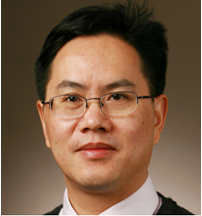biography
Prof. Xiang is the Director of MEG research at Cincinnati Children’s Hospital Medical Center, an Associate Professor at University of Cincinnati. Dr. Xiang received his formal training in neurology and completed his PhD in magnetoencephalography (MEG). His graduate training also included background in neurophysiology, functional brain mapping, signal processing and computer programming language. Dr. Xiang’s research focuses on clinical applications of MEG in neurology and pediatrics, particularly, high-frequency neuromagnetic signals originating from the human brain. MEG is a new tool for noninvasively measuring very weak magnetic signals. Newly developed high-sampling-rate MEG recording techniques allow the clinician/researcher to address questions that exceed the capabilities of traditional approaches. He also aims to develop new techniques to non-invasively localize seizure onset regions and ultimately avoid lengthy, costly, and risky invasive intracranial electroencephalographic (EEG) recordings to find the abnormal epileptic regions requiring surgical removal. Dr. Xiang is the creator of MEG Processor, a software package for MEG data analysis, spectral analysis and source localization. The outstanding feature of this software is its ability to handle huge amounts of data, systematically transfer time-domain waveform to frequency domain spectrogram with polarity information. Thus, it can precisely reveal the time-frequency context of high-frequency signals and volumetrically localize the magnetic sources in multiple frequency bands. The novel algorithms specifically developed by us for detecting high-frequency brain signals are: (1) wavelet-based beamformer; (2) virtual sensor; (3) accumulated spectrogram; (4) accumulated source imaging. Dr. Xiang is also the creator of Magnetic Source Locator (MSL): a software package has been specifically developed for three-dimensional integration of magnetoencephalography / electroencephalography and magnetic resonance imaging /computed topography. It has a digitalization system, which can digitalize electrodes position, head shape, fiducial points and align multiple neuroimaging modalities. The digitalization function allows users to precise transform multiple images into a single 3D coordinate system with fiducial points or shape matching. It also has the ability to statistically compare multiple groups of structural or functional images. Dr. Xiang developed the world’s first High-Frequency MEG/EEG Database for Pediatrics. His research has been focused on MEG/EEG detection of high-frequency signals (e.g. high gamma, high-frequency oscillations, ripple, and fast ripple) for more than 14 years. The discovery of MEG high-frequency signals opens a new window for the study of epilepsy, going far beyond the investigation of epileptic spikes. Through our previous studies, we have established a MEG database for pediatrics (ClinicalTrials.gov Identifier: NCT00600717). The MEG data in our database were digitized at 6,000 Hz or 12,000 Hz. The normative values and developmental patterns of high-frequency brain activity have been cited and used by researchers in other MEG sites.
Area of Interest
His research focuses on clinical applications of MEG in neurology and pediatrics, particularly, high-frequency neuromagnetic signals originating from the human brain.
top publication
1.Leiken K, Xiang J, Zhang F, Shi J, Tang L, Liu H, Wang X. Magnetoencephalography detection of high-frequency oscillations in the developing brain. Front Hum Neurosci. 2014 Dec 12;8:969.
2.Xiang J, Korman A, Samarasinghe KM, Wang X, Zhang F, Qiao H, Sun B, Wang F, Fan HH, Thompson EA. Volumetric imaging of brain activity with spatial-frequency decoding of neuromagnetic signals. J Neurosci Methods. 2015 Jan 15;239:114-28.
3.Xiang J, Tenney JR, Korman AM, Leiken K, Rose DF, Harris E, Yuan W, Horn PS, Holland K, Loring DW, Glauser TA. Quantification of Interictal Neuromagnetic Activity in Absence Epilepsy with Accumulated Source Imaging. Brain Topogr. 2014 Oct 31 (PMID: 25359158).
4.Tenney JR, Fujiwara H, Horn PS, Vannest J, Xiang J, Glauser TA, Rose DF. Low and high frequency oscillations reveal distinct absence seizure networks. Ann Neurol. 2014 Oct; 76(4):558-67.
5.Ge HT, Liu HX, Xiang J, Miao AL, Tang L, Guan QS, Wu T, Chen QQ, Yang L, Wang XS. Abnormal cortical activation in females with acute migraine: A magnetoencephalography study. Clin Neurophysiol. 2015 Jan;126(1):170-9.
6.Xiang J, Luo q, Kotecha r, Korman A, Zhang F, Luo H, Fujiwara H, Hemasilpin N, Rose D. Accumulated Source Imaging of Brain Activity with Both Low and High-Frequency Neuromagnetic Signals. Frontiers in neuroinformatics, 2014; 8(57):1-18.
7.Miao A, Xiang J, Tang L, Ge H, Liu H, Wu T, Chen Q, Hu Z, Lu X, Wang X. Using ictal high-frequency oscillations (80-500Hz) to localize seizure onset zones in childhood absence epilepsy: A MEG study. Neurosci Lett. 2014 Apr 30;566:21-6.
8.Miao A, Tang L, Xiang J, Guan Q, Ge H, Liu H, Wu T, Chen Q, Yang L, Lu X, Hu Z, Wang X. Dynamic magnetic source imaging of absence seizure initialization and propagation: A magnetoencephalography study. Epilepsy Res. 2014 Mar;108(3):468-80.
9.Zhang F, Benson C, Murphy D, Boian M, Scott M, Keith R, Xiang J, Abbas P. (2013) Neural adaptation and behavioral measures of temporal processing and speech perception in cochlear implant recipients. PLoS One. 8(12):e84631.
10.Xiang J, Degrauw X, Korostenskaja M, Korman AM, O'Brien HL, Kabbouche MA, Powers SW, Hershey AD. (2013) Altered Cortical Activation in Adolescents with Acute Migraine. J Pain. 14(12):1553-63.
11.Xiang J, Degrauw X, Korman AM, Allen JR, O'Brien HL, Kabbouche MA, Powers SW, Hershey AD. (2013) Neuromagnetic abnormality of motor cortical activation and phases of headache attacks in childhood migraine. PLoS One. ;8(12):e83669.
12.Korostenskaja, M., Harris, E., Meyer, C., Horn, P., Wang, Y., Rose, D., Fujiwara, H., Xiang, J. (2013). Magnetoencephalography reveals altered task-independent auditory information processing in youth with obsessive compulsive disorder. Psychiatry Res. 212(2):132-40.
13.Gummadavelli A, Wang Y, Guo X, Pardos M, Chu H, Liu Y, Horn P, Zhang F, Xiang J. (2013) Spatiotemporal and frequency signatures of word recognition in the developing brain: A Magnetoencephalographic study. Brain Res. 1498: 20-32.
14.Guo X, Xiang J, Wang Y, O'Brien H, Kabbouche M, Horn P, Powers SW, Hershey AD. (2012). Aberrant neuromagnetic activation in the motor cortex in children with acute migraine: a magnetoencephalography study. PLoS One. 7(11):e50095.
15.Guo X, Xiang J, Mun-Bryce S, Bryce M, Huang S, Huo X, Wang Y, Rose D, Degrauw T, Gartner K, Song T, Schmit J, Vargus-Adams J.( 2012); Aberrant high-gamma oscillations in the somatosensory cortex of children with cerebral palsy: A MEG study. Brain Dev. 34(7):576-83.

